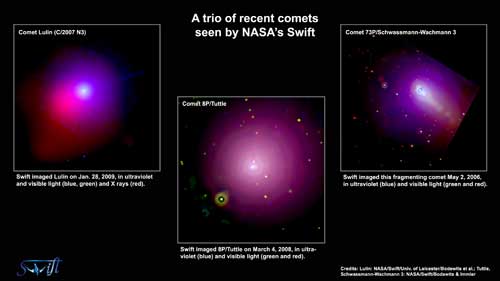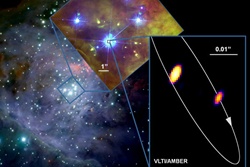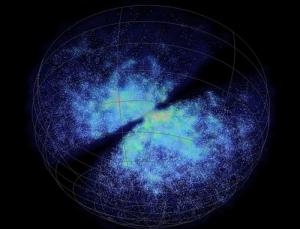
© NASAMontage of comets Lulin, Tuttle, and SW3
Swift's primary job is to quickly alert astronomers about new gamma-ray bursts - powerful explosions from distant dying stars. "But Swift's rapid response and flexibility allow us to perform other science while the spacecraft is waiting for gamma-ray bursts to occur," said presenter Geronimo Villanueva, a planetary scientist at NASA's Goddard Space Flight Center in Greenbelt, Md.
From its orbital perch, Swift can view targets using ultraviolet wavelengths, visible light, and X rays -- and it's the only observatory that sees them at the same time. Between bursts, astronomers task Swift to survey the entire sky at X-ray wavelengths, monitor exploding stars, image galaxies, and study comets.
Comets are clumps of frozen gases mixed with dust sometimes called "dirty snowballs." These icy bodies cast off gas and dust whenever they venture near the sun. Most recently, Swift observed Comet Lulin as part of a study led by Jenny Carter at the University of Leicester, U.K. Lulin was faintly visible to the naked eye when it passed 38 million miles from Earth --- or about 160 times farther than the moon - in late February.

